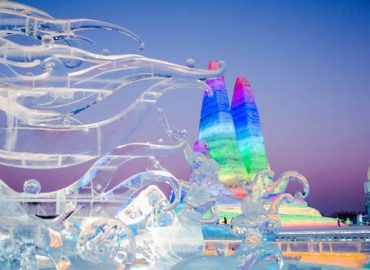The Yellow River dubbed the “Mother River” of China, runs through nine provinces and autonomous regions, including Sichuan, Gansu, and Ningxia.
Springing up in the Bayan Har Mountains on the Qinghai-Tibet Plateau, the Yellow River flows eastward through Gansu before swarming into Sichuan. Due to Sichuan’s unique landscape, it evolves into a meander in its five counties, shaping the magnificent natural scenery of Ruo’ergai, Aba, Songpan, Hongyuan, and Shiqu.
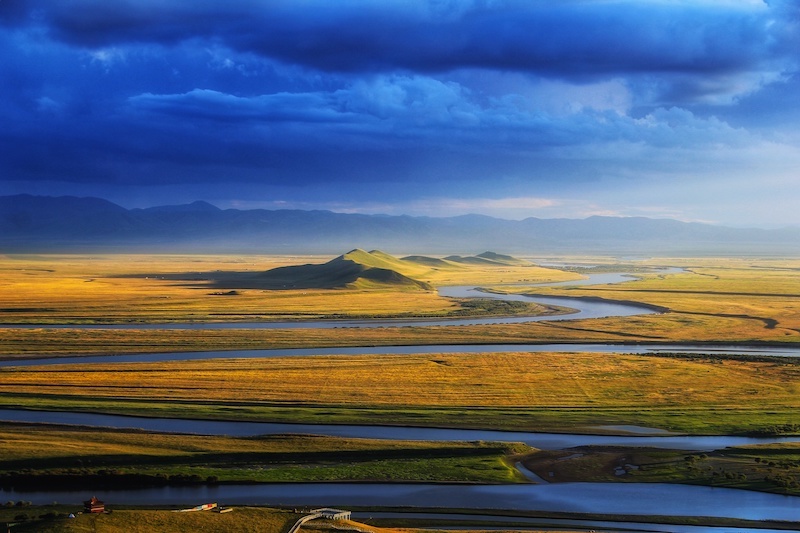
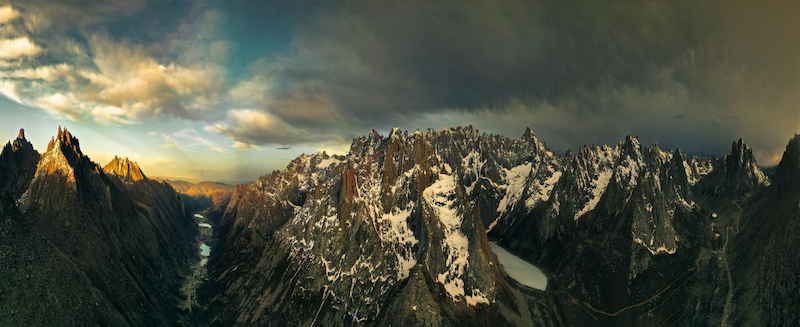
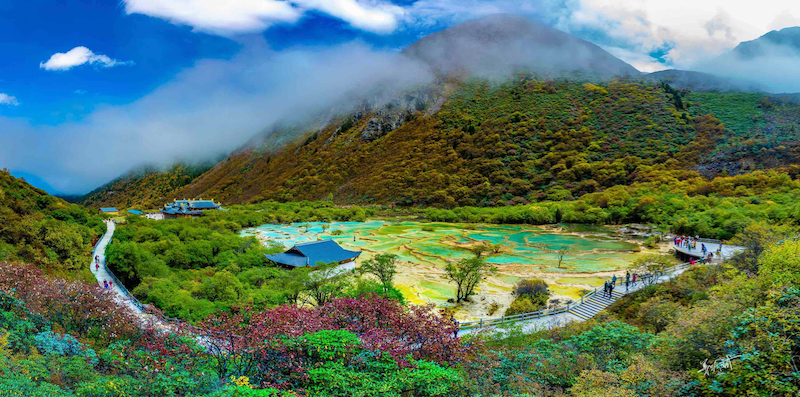
In Ruo’ergai County, the First Bay of the Nine Curves of the Yellow River and the Flower (Huahu) Lake Eco-tourism Area are picturesque; in Aba County, the Lianbaoyeze Scenic Area has mesmerizing scenery such as the glacial remnant, snow-capped mountains, and picturesque lakes and rocks; in Songpan County’s Huanglong Scenic Area, the Five-Color Pond is composed of 693 fantastic ponds; Hongyuan County enjoys fascinating Emetang grassland, Moon Bay, and Riganqiao Scenic Area; Shiqu County’s Changshagongma Wetlands is home to endangered species, such as black-necked crane and Chinese Merganser and one of the largest remnants of the last ice age on the Qinghai-Tibet Plateau.

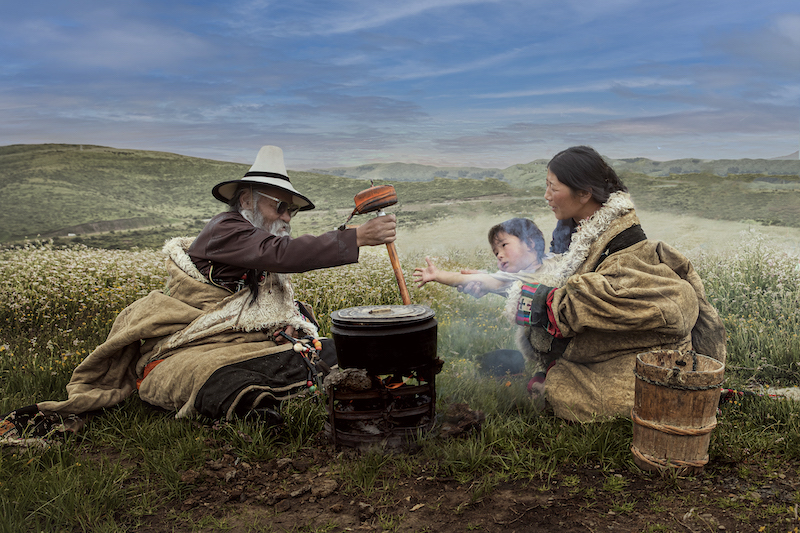
For tens of millions of years, the Yellow River has nurtured a splendid history and culture in Sichuan Province. The hand-painted thangka is a unique painting art form. The thangka painting is superbly painted in rich colors and exquisite details by using bright mineral pigments. The ancient Tibetan chess is still widely popular in Aba County, and people can understand the laws of nature from the board game. The Hongyuan equestrian is passionate and exuberant, presenting traditional ethnic sports. The Tibetan folk song of Western Sichuan, inspired by people’s labor and spiritual beliefs, is characterized by a free, high-pitched melody. Ruo’ergai Tibetan medicine, originating from the local medical knowledge, incorporates the achievements of Tibetan medicine in all ages and modern medical technology, developing the excellent culture of Tibetan medicine for the sake of humankind.

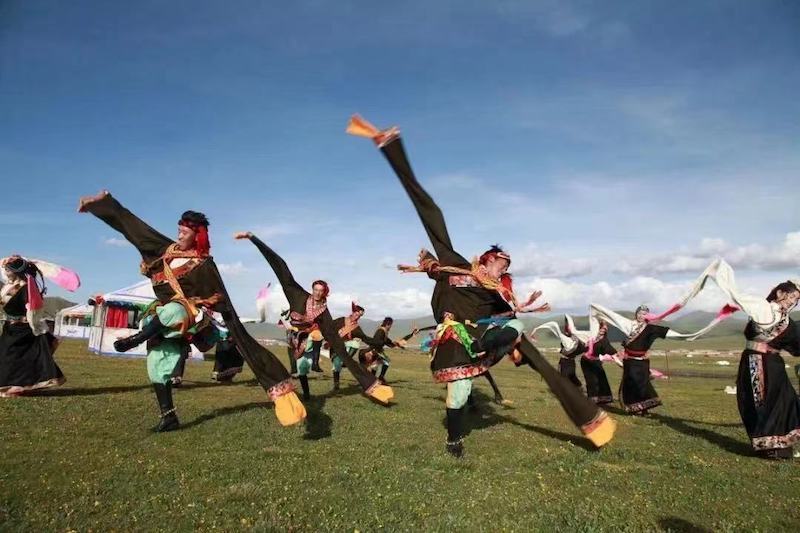
[DANISH VERSION]
Den Gule Flod, kaldet Kinas Moderflod, løber gennem ni provinser og autonome regioner, herunder Sichuan, Gansu og Ningxia.
Den Gule Flod, der springer fra Bayan Har-bjergene på Qinghai-Tibet-plateauet, flyder mod øst gennem Gansu, før den strømmer ind i Sichuan. På grund af Sichuans unikke landskab har den udviklet sig til en bugt, og dermed dannet den storslået natur i de fem amter, herunder Ruoergai, Aba, Songpan, Hongyuan og Shiqu.
I Ruoergai er den første bugt af den gule flods ni kurver og økoturismeområdet for blomstersøen (Huahu) maleriske. I Aba har det naturskønne område, Lianbaoyeze, fortryllende landskaber såsom gletsjerrester, sneklædte bjerge og maleriske søer og klipper. Den fem-farvet dam i det naturskønne Huanglong-område i Songpan består af 693 fantastiske damme. Hongyuan nyder fascinerende Emetang græsmark, månebugt og det naturskønne område Riganqiao. Shiqus Changshagongma-vådområder er hjemsted for truede arter, såsom sorthalsede trane og kinesiske skalleslugere og en af de største rester fra den sidste istid på Qinghai-Tibet-plateauet.
I titusinder af år har Den Gule Flod næret en fantastisk historie og kultur i Sichuan-provinsen.
Den håndmalede thangka er en unik malerkunstform. Thangka-maleriet er fremragende malet i rige farver og udsøgte detaljer ved brug af lyse mineralske pigmenter. Den gamle tibetanske skak er stadig meget populært i Aba, og folk kan forstå naturens love ud fra brætspillet. Hongyuan-rytteren er passioneret og livsglad og præsenterer traditionel etnisk sport. Den tibetanske folkesang i det vestlige Sichuan, inspireret af folks arbejde og de åndelige overbevisninger, er karakteriseret ved en fri, højstemt melodi. Ruoergai tibetansk medicin, der stammer fra den lokale medicinske viden, inkorporerer resultaterne af tibetansk medicin fra alle perioder og moderne medicinsk teknologi, og dermed udviklet den fremragende tibetanske medicinske kultur.


